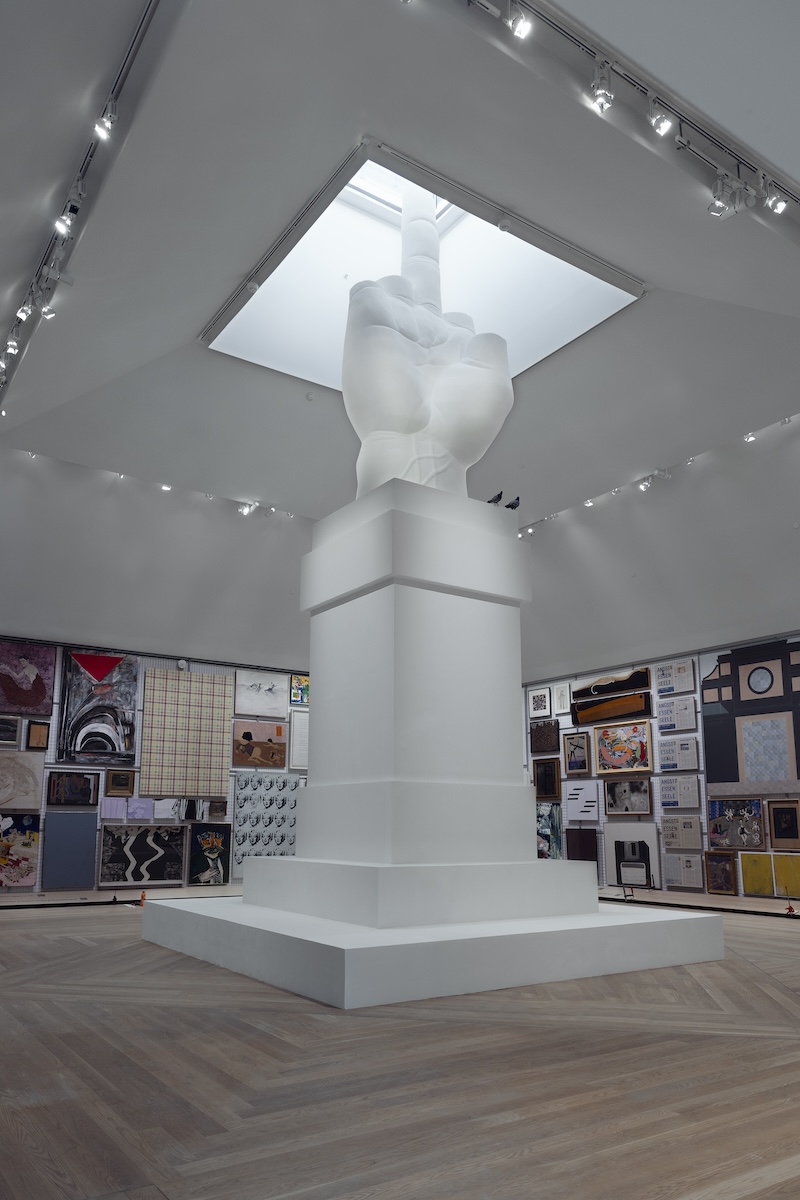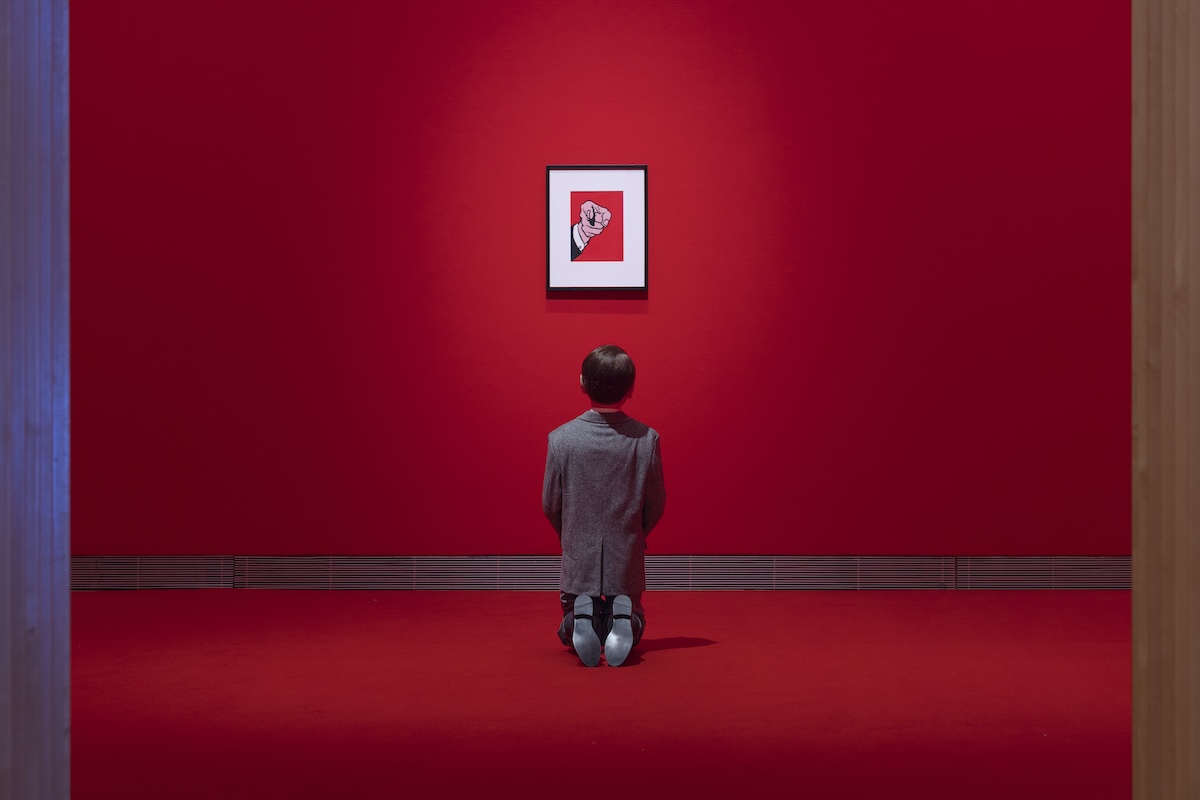THE THIRD HAND: MAURIZIO CATTELAN AND THE MODERNA MUSEET COLLECTION
HAPPENINGText: Victor Moreno
Next is the largest room of the exhibition, where Cattelan has curated a selection from the Moderna Museet’s extensive collection, handpicking works from their storage. Considering the museum’s collection surpasses 130,000 works, this is a challenging task, but it aligns with the museum’s mission to collect, preserve, and exhibit contemporary art. This room, named “The Square,” aims to evoke a sense of communal celebration of art without hierarchies among the pieces.

Installation view with full-sized copy of Maurizio Cattelan’s monumental sculpture L.O.V.E. Photo: My Matson/Moderna Museet © Maurizio Cattelan 2024
The selection includes notable works, such as those by Warhol, that are rarely exhibited. At the center of the room stands a replica of Cattelan’s renowned sculpture L.O.V.E. — a gigantic fist showing the middle finger — originally made in marble and prominently displayed in front of the stock exchange in Milan, which such location takes on added significance in these times of recession and economic challenges.

Maurizio Cattelan, HIM, 2001 © Maurizio Cattelan 2024, Roy Lichtenstein, Finger Pointing, 1973 © Roy Lichtenstein. Photo: My Matson/Moderna Museet
Arguably the most striking room of the exhibition is titled “Us.” Here, visitors are enveloped by vibrant red walls and floors. As you enter, you see from behind a hyper-realistic wax figure of a boy kneeling as if in prayer or paying tribute to Roy Lichtenstein’s iconic work, “Finger Pointing,” which hangs on the wall in front of him. The scene is initially unsettling, and becomes even more so as you realize that the figure has Adolf Hitler’s head on the body of a young boy. His hands are folded in prayer, and his gaze is directed upwards in a submissive gesture. Lichtenstein’s “Finger Pointing” is an image borrowed from the U.S. Army’s “Uncle Sam” recruitment posters used during the First and Second World Wars. The room’s Kubrickian vibe, with its controversial image of a praying Hitler boy juxtaposed against Uncle Sam, creates a compelling blend of visual art and provocative commentary. The name “Us” suggests that we should be more attentive to the events happening around us daily and react to the atrocities in our society. The sculpture of Hitler’s head on the boy’s body, titled HIM, was created by Cattelan in Stockholm back in 2001.

Maurizio Cattelan, Kaputt, 2013. Photo: My Matson/Moderna Museet © Maurizio Cattelan 2024
In the final part of the exhibition, five horse bodies are suspended on the wall, with only the rear halves visible. These hyperrealistic sculptures are beautifully crafted, with their skins gleaming and their tails hanging long. Named “Kaputt,” the installation pays homage to Curzio Malaparte’s novel of the same name, depicting a group of horses that, during World War II, escaped a fire by leaping into a lake. The lake froze suddenly, trapping the horses with their heads above the surface, and died. The installation takes the sight as the wall representing beneath the ice.
Read more ...




